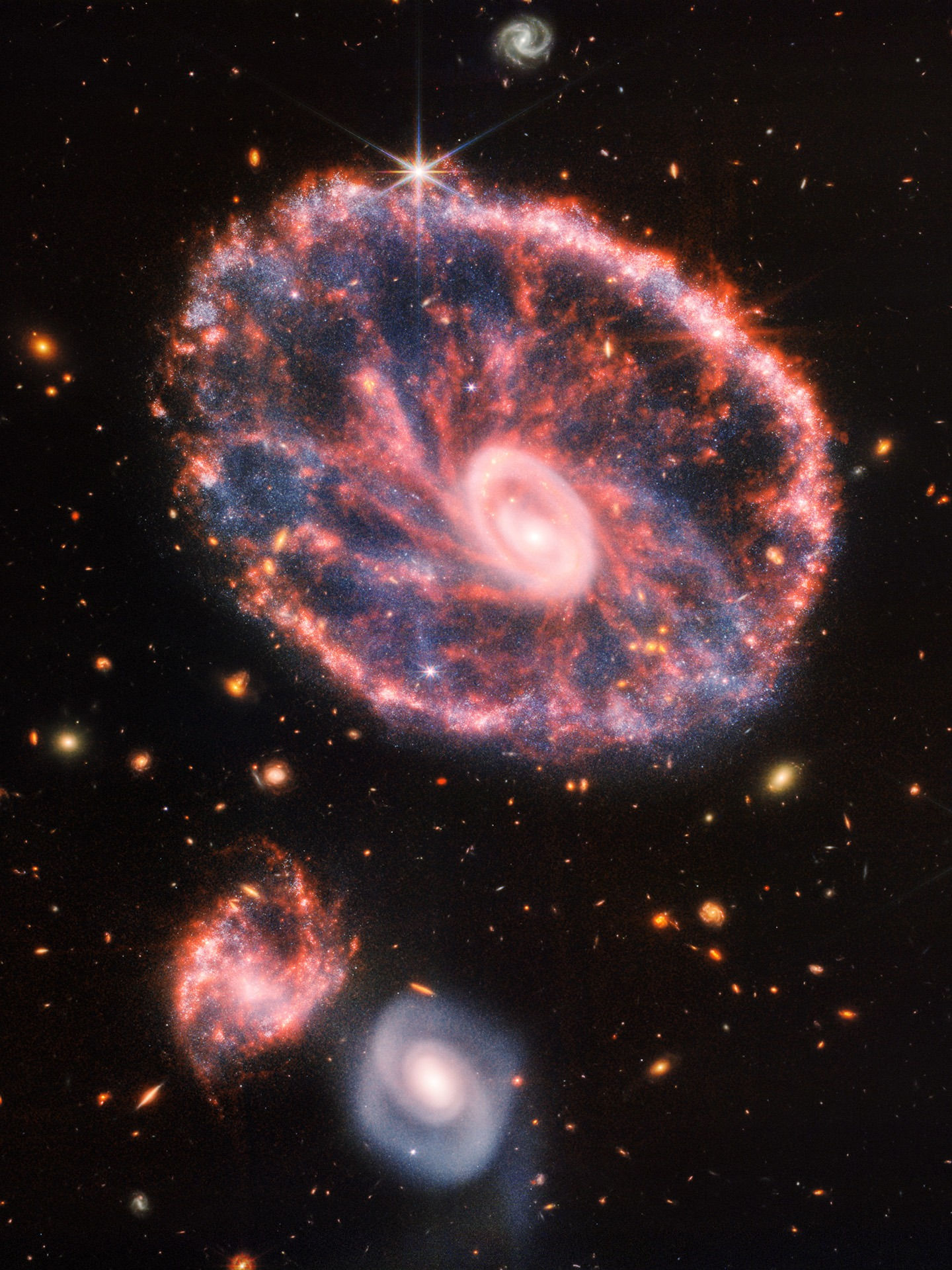"Today We Received The Green Light to go Ahead." Avi Loeb is Searching for an Alien Spacecraft!
- Prof.Smith
- Mar 26, 2023
- 5 min read

Harvard physicist Avi Loeb, known for his controversial theories about the interstellar object Oumuamua being an alien artifact, is back in the spotlight with a new expedition. This time, Loeb and his team are heading to the bottom of the Pacific Ocean in search of a potential alien artifact. The expedition, known as the Galileo Project, has been highly scrutinized but Loeb and his team are determined to push forward.
The target of the expedition is a meteorite, designated CNEOS1 2014-01-08, which appears to be one of the few interstellar objects ever observed in our solar system and the best candidate for one that crashed to Earth. Loeb and his team believe that the meteorite may be harder and tougher than any other meteorite in NASA's Center for Near Earth Object Studies catalog, which could be a clue that it is not just random space debris but an alien probe.
The challenge for Loeb and his team is that the meteorite disintegrated into tiny fragments when it entered our atmosphere, which means they have to search for fragments that are likely the size of a grain of sand at the bottom of the ocean. To find these fragments, Loeb and his team have developed sleds equipped with magnets, cameras, and lights that will sift through the seafloor. In theory, the magnets should dredge up any meteoritic fragments – be it the iron shards of a natural object or stainless-steel slivers from an extraterrestrial craft.
The expedition will take place off the coast of Manus Island in Papua New Guinea, where Loeb and his team have narrowed down the search area to a roughly four square mile region, submerged beneath some 0.65 miles of ocean. The team has complete design and manufacturing plans for the required sled, magnets, collection nets, and mass spectrometer, and they are ready to start the expedition this summer.
While some of Loeb's academic peers may consider his hopes of finding something alien a little hokey, Loeb is determined to find evidence to support his theories. "Extraordinary claims require extraordinary evidence," he said. Loeb and his team have assembled a dream team, including some of the most experienced and qualified professionals in ocean expeditions, and they have received the green light to go ahead. There is a chance the expedition will fail, but Loeb believes it is a risk worth taking. If they do find evidence of an alien artifact, it could be one of the most significant discoveries in human history.
The search for extraterrestrial life and the possibility of finding evidence of intelligent civilizations beyond our planet is a fascinating and important topic. While the chances of finding an alien artifact at the bottom of the Pacific Ocean may be slim, the pursuit of knowledge and exploration is always worthwhile. The Galileo Project is an excellent example of how scientific curiosity and creativity can lead to innovative ideas and advancements in our understanding of the universe.
Even if the Galileo Project doesn't find evidence of an alien artifact, the expedition could still yield important insights into the nature of interstellar objects and their impact on our planet. The search for answers and the quest for knowledge is a fundamental part of the human experience, and it's inspiring to see individuals like Avi Loeb and his team push the boundaries of what we know and what we believe is possible.
Research funding can sometimes be a contentious issue, particularly when it comes to projects that may seem unlikely to yield immediate or practical benefits. However, it's important to recognize that research is an investment in our collective future, and that some of the most important discoveries in history have come from seemingly unlikely places.
It's also worth noting that scientific research is often a collaborative effort, with different individuals and groups bringing their own expertise and perspectives to the table. The Galileo Project is no exception, and Avi Loeb's team includes experienced professionals from a variety of fields, including oceanography, engineering, and astronomy. By working together and pooling their resources, they are able to tackle a complex and challenging problem that would be difficult for any one person or group to solve alone.
In the end, it's impossible to predict what the Galileo Project might uncover. But by taking a chance and exploring the unknown, Loeb and his team are demonstrating the kind of courage and curiosity that has led to some of the most transformative discoveries in human history.

In 2017, a mysterious interstellar object called Oumuamua whizzed past Earth, and scientists were perplexed by its unusual characteristics. Comets typically come from a bank of frozen objects situated at the outer solar system know as the "Oort Cloud" and accelerate when they get close to the sun because the ice inside them turns to water vapor, which is ejected outwards, acting as a thruster. This expulsion of gas results in a dust tail or a bright halo called a coma, but Oumuamua had neither of these things and was still accelerating more than it should. This led many to suggest it was an alien spacecraft being powered by an extraterrestrial engine.

One interesting fact about Oumuamua is its unusual shape. Observations suggest that it is highly elongated and has a cigar-like shape with an estimated length of 1km, and the object has a reddish appearance, which is quite different from any natural object in our solar system. In fact, its shape has led some researchers to suggest that it may be an artificial object or probe sent by an extraterrestrial civilization, although this idea is highly speculative and has not been supported by any evidence.
The discovery of objects like CNEOS1 and Oumuamua, which appear to have originated from beyond our solar system, remind us that the universe is a vast and mysterious place, and that there is still much we have yet to discover.
Indeed, the search for extraterrestrial intelligence is one of the most exciting and important areas of research in astronomy and astrobiology. With the advent of new technologies and techniques, we are constantly improving our ability to detect and analyze potential signals from other worlds. And while we have yet to find concrete evidence of alien life, there are many subtle cues in the universe that suggest we are not alone.
It will take a collective effort and the application of our collective intellect to decode any potential data from extraterrestrial sources. This requires interdisciplinary collaboration, as well as a willingness to explore unconventional ideas and think outside the box.
In the end, it is the pursuit of knowledge and understanding that drives us forward in our exploration of the universe. And as we continue to push the boundaries of what we know and what we believe is possible, we may one day find ourselves face-to-face with another civilization from beyond our planet, forever changing our understanding of ourselves and our place in the cosmos. It's true that many scientists, including Stephen Hawking, have expressed concerns about the potential risks associated with contacting or encountering an extraterrestrial civilization. The idea is that if we were to make our presence known to an alien species, they may not necessarily have our best interests at heart, and could pose a threat to our survival.

On the other hand, if we were to embark on interstellar space travel and come into contact with extraterrestrial life on a distant planet, it's true that there is a good chance they may not be as technologically advanced as us. However, we also need to consider the possibility that they may be far more advanced than us, and that we could be the ones at a disadvantage in any potential encounter.
It's important that we approach the search for extraterrestrial intelligence with caution and consideration for the potential risks involved. We should always be prepared for the possibility of encountering intelligent life, and have protocols in place to ensure that any contact or communication is conducted in a responsible and safe manner.






























































































Comentarios